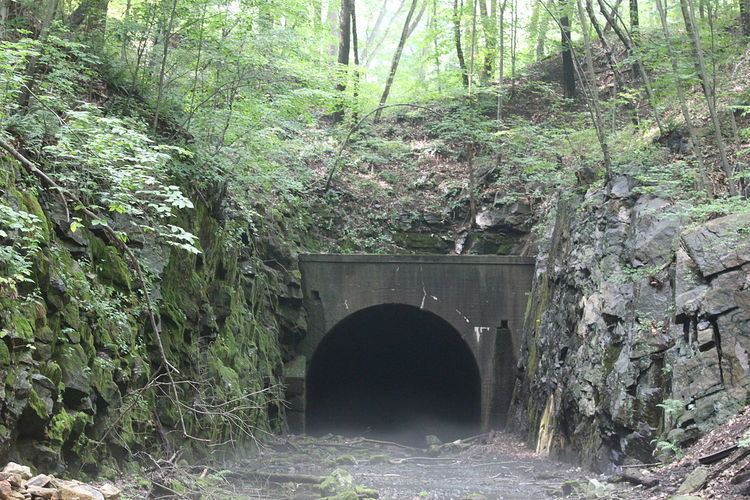 | ||
Oxford tunnel
Of all the seven tunnels on the Lackawanna Railroad's 400-mile mainline, Oxford Tunnel or Van Nest Gap Tunnel would be arguably the most difficult to build. The combination of stubborn gneiss, inconsistent funding and American Civil War-era technology caused protracted delays. Meanwhile, the construction of the Warren Railroad itself, of which Oxford Tunnel was just a part, caused its chief overseer, John I. Blair, daily headaches. The line would require three large bridges, two tunnels (the other tunnel being at Manunka Chunk), and many miles of cutting and filling. The terrain was less than ideal for a railroad. As such, for over a century, rail historians thought that Tunnel Hill had been initially crossed, prior to the completion of the tunnel underneath, by a switchback or some sort of cheaply built temporary route. Neither was true. In fact, Blair had built a fairly substantial, albeit circuitous, route over the hill. Local inspections during the early 1980s revealed that the actual route taken by temporary track had been partially obliterated by a corn field, misleading previous historians into believing that the route had been configured differently.
Contents
When the tunnel was finally completed in September 1862, locomotives and freight and passenger cars were much smaller than they would be some forty years later. In engineering the tunnel, it was not anticipated that the tunnel bore, which would initially allow two tracks to pass through it, would restrict the size of the trains in later years. Indeed, to address this issue by 1900 gauntlet track was required, which is an arrangement that permits two tracks that closely overlap to pass through the tunnel together. The advantage of such an arrangement is that it maximized the overhead and side clearances in the roundish tunnel bore. Its chief disadvantage, however, was that this created what was in effect a single-track railroad through the tunnel—a bottleneck—which with numerous trains in both directions inevitably would lead to delays.
